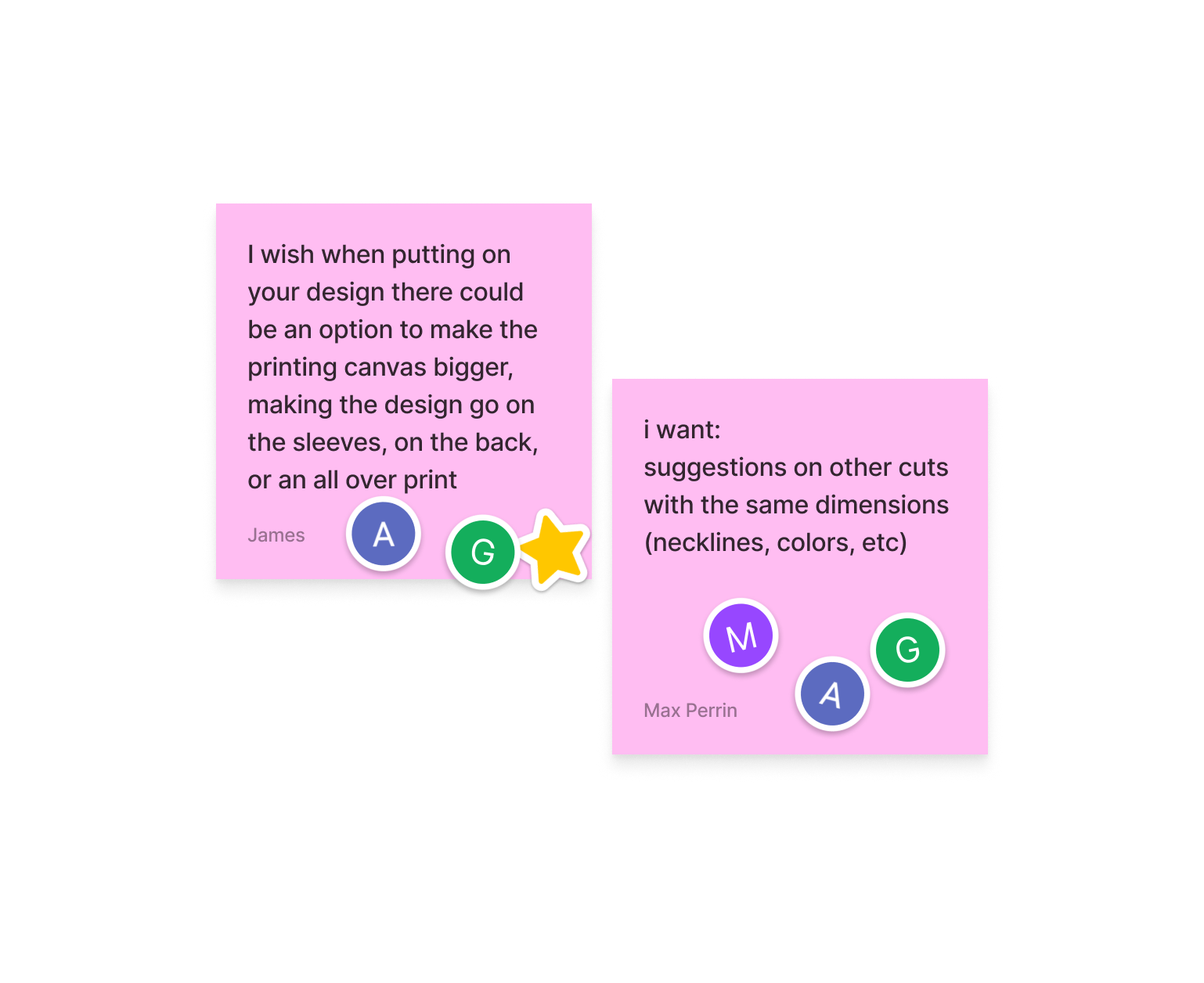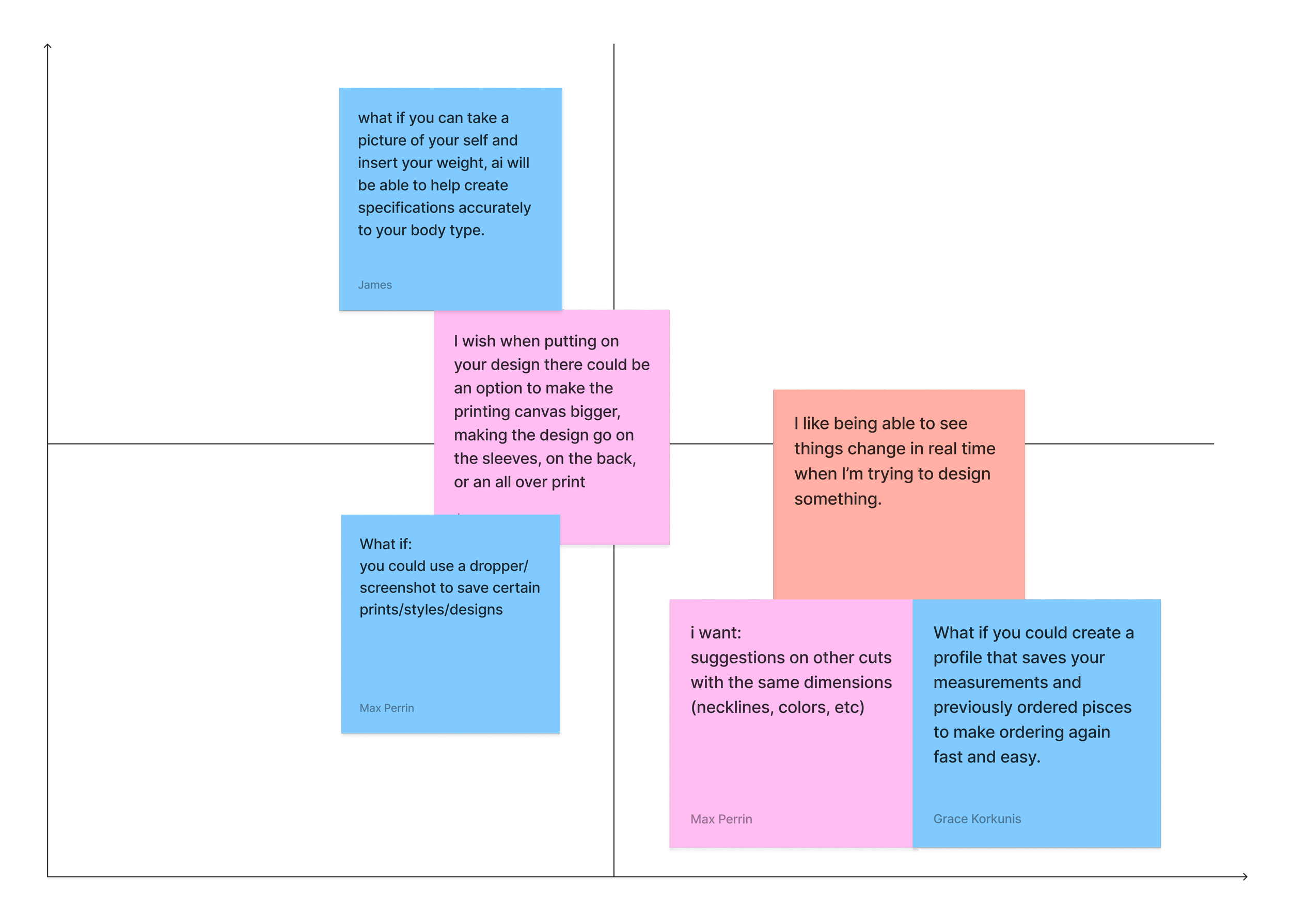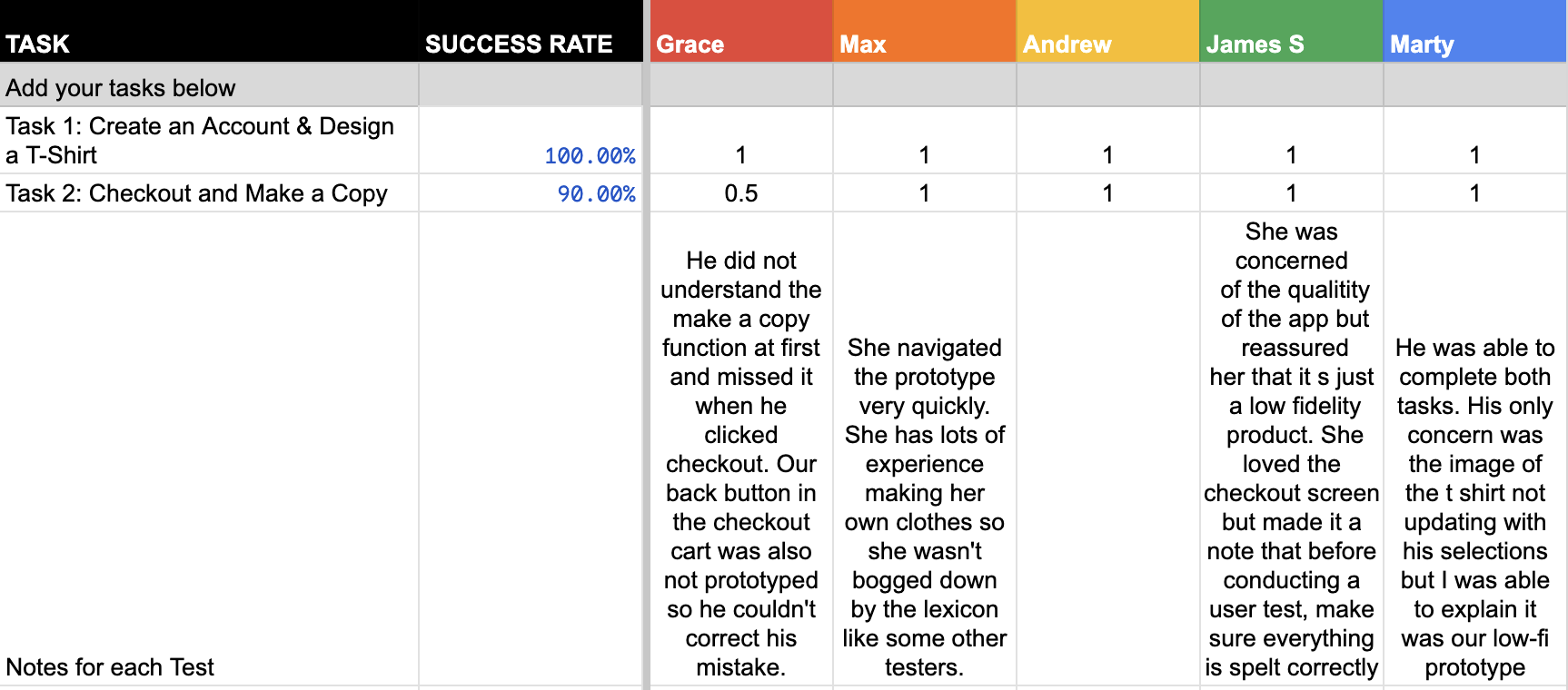Cut & Sew Co.
Our group observed that current clothing sites aren’t meeting the needs of adults who value fit and material, which is causing a lack of trust in the longevity and quality of new clothes.
Problem:
Cut&Sew Co. is designed to help individuals feel more confident in their personal style and quality of clothes by giving them the power to create exactly what it is that they want: clothes that fit.
Proposed Solution:
Team of 5 from UCI’s UX/UI Bootcamp Final Project
The Research
Interview Demographic:
19-35, aiming for Gen Z and Millenials, Petite and Plus sizes, Fashion Forward.
Questions we wanted answered:
Where do folks shop? Is there a demand for custom clothing? What clothing features are the most important to customize?
Shopping online is preferred over in store
Material and fit matter.
Tailoring services are used, but viewed as a hassle
A custom design service would be great but would need assistance throughout process
The Findings
User Persona
Diana Morgan, 27, Marketing
"I want a wardrobe that not only looks good but truly feels like me—stylish, comfortable, and sustainable—without sacrificing quality or breaking the bank."
Quality over Quantity
Goals:
Seeks a creative outlet to express her personal style.
Looking for affordable, high-quality wardrobe basics.
Aims to live life to the fullest.
Desires a wardrobe that is customized to suit her preferences.
Pain Points:
Online purchases don’t meet her expectations, leading to frequent returns.
Disappointed by differences between in-person and online product images, now distrustful.
Hard to find clothes that are simultaneously comfortable, affordable, and stylish.
Brand Loyalty to:
Feature Ideation
Features we liked in other products:
Features we wished other products had:
What if we could implement these new feature ideas?
Feature Prioritization Matrix
By utilizing a feature prioritization matrix, we were able to identify which features would most impact users while keeping cost and engineering time low. The bottom right quadrant of the matrix was what we focused on building and prototyping:
Seeing changes in real time.
Suggestions for necklines, colors as well as measurements.
Ability to save your info to a profile.
High
Complexity
Low
User Impact
High
Creating a User Flow
Keep it simple and clear:
In our research, users loved the idea of custom clothes but needed an easy and inviting experience if they were going to try custom clothes.
Start off small:
Talking about this prototype had our group wishing for a large variety of custom clothing ranging from pants, dresses, button downs, etc. But, for time’s sake, and based on interviewees’ feedback that simple style was important to them, we decided to create a flow for the perfect T-Shirt first.
The Lofi Prototype
3 Step Proccess: We put ourselves in the shoes of the users and agreed that there were really only 3 main steps needed in our prototype for a first time user:
Usability Testing
Main Fix:
4 of 5 of our testers were able to complete our two tasks. 1 user had trouble using our “Make a Copy” feature which suggests a second shirt with drop downs to customize the second one right in the checkout experience.
Small fixes:
Prototype the back button from the checkout screen
Implement colors and shapes changing in real time with the design selections.
Small spelling fix on checkout.
We designed a flow for a user to log in and customize the following flow:
Enter
Log in
Enable FaceID
Customize:
Style: Casual
Material: Bamboo
Color: Beige
Neckline: V-Neck
Hem: Scoop
Add to Cart
Checkout















